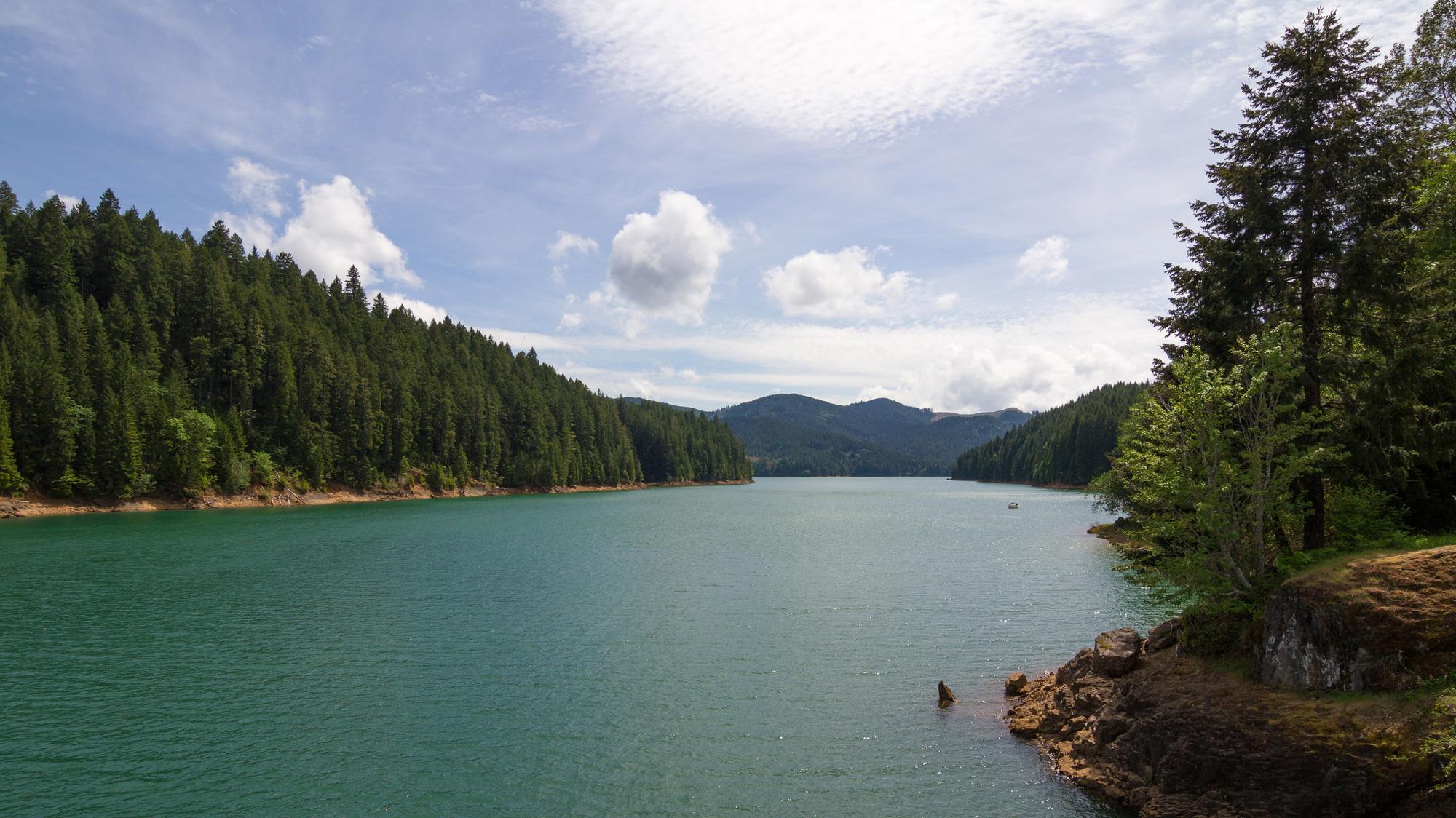
Biologists found the first documented examples of Oregon salmon spawning without going to the ocean in Green Peter Reservoir on a tributary of the Willamette River.
Shawn O'Neil/Flickr
It took some snorkeling and biological detective work to prove it.
But now Jeremy Romer and Fred Monzyk can confidently say they've found the first documented examples of Oregon chinook salmon spawning without swimming to the ocean and back.
The two Oregon Department of Fish and Wildlife biologists published their findings in an article this month in The North American Journal of Fisheries Management.
The discovery was the result of an investigation that started when they noticed something strange about the chinook salmon fishermen were catching in Green Peter Reservoir southeast of Corvallis: They looked wild.
In photographs printed in local newspapers and on the website ifish.net, several of the chinook being caught in the reservoir clearly had their adipose fins – little fins on their backs that are clipped off in hatcheries to mark the difference between hatchery fish and wild.
But there's no way for wild fish to get to the reservoir.
The reservoir was created by Green Peter Dam on the Santiam River, a tributary of the Willamette. And the dam doesn't have a route allowing fish passage to the ocean.
Up until 2008, the state had released excess hatchery chinook above the reservoir. But those fish were essentially trapped. They were only released so fishermen could catch them. And according to their biology, they should only have lived to 2012.
"Several pictures were of chinook captured in 2013," Romer said. "That's where the math didn't add up because the last releases happened in 2008, and fish in the Willamette rarely live to age 6."
So, the fish being caught in the reservoir couldn't be the hatchery fish the state released in 2008 – not only because they had adipose fins but also because those fish were supposed to be dead already.
"One of the biggest clues was that we kept seeing photos in local newspapers of happy anglers with salmon we knew we didn't put in there," Monzyk said.
So, if these fish weren't the hatchery chinook released by ODFW, where did they come from?
"It was an ideal opportunity for us to investigate," Romer said.
The biologists went snorkeling and saw nine adult chinook salmon with their adipose fins intact. They also recovered six carcasses of wild-looking chinook. They ran tests to see if chemistry inside the fish indicated that they'd been to the ocean. It didn't. Nonetheless, they found four female fish that appeared to have successfully spawned in 2012.
Their conclusion: The hatchery chinook released above the dam didn't go to the ocean, but some of them spawned anyway. And fishermen were catching their offspring in Green Peter Reservoir.
"It's another example of the resilience of chinook in the Pacific Northwest," Romer said. "It's pretty amazing that even though they can't fulfill their regular pathways or life history they're able to adapt and still reproduce. Like Jurassic Park, they'll find a way."
You may have heard of kokanee – they're landlocked sockeye salmon. Chinook don't usually evolve to live without going to ocean and back, Romer said. It's been known to happen in a few places, but this is the first time it's been documented in Oregon. Romer and Monzyk say it likely won't be the last. They suspect a similar situation has already unfolded in Detroit Lake, southeast of Salem.
--Cassandra Profita
